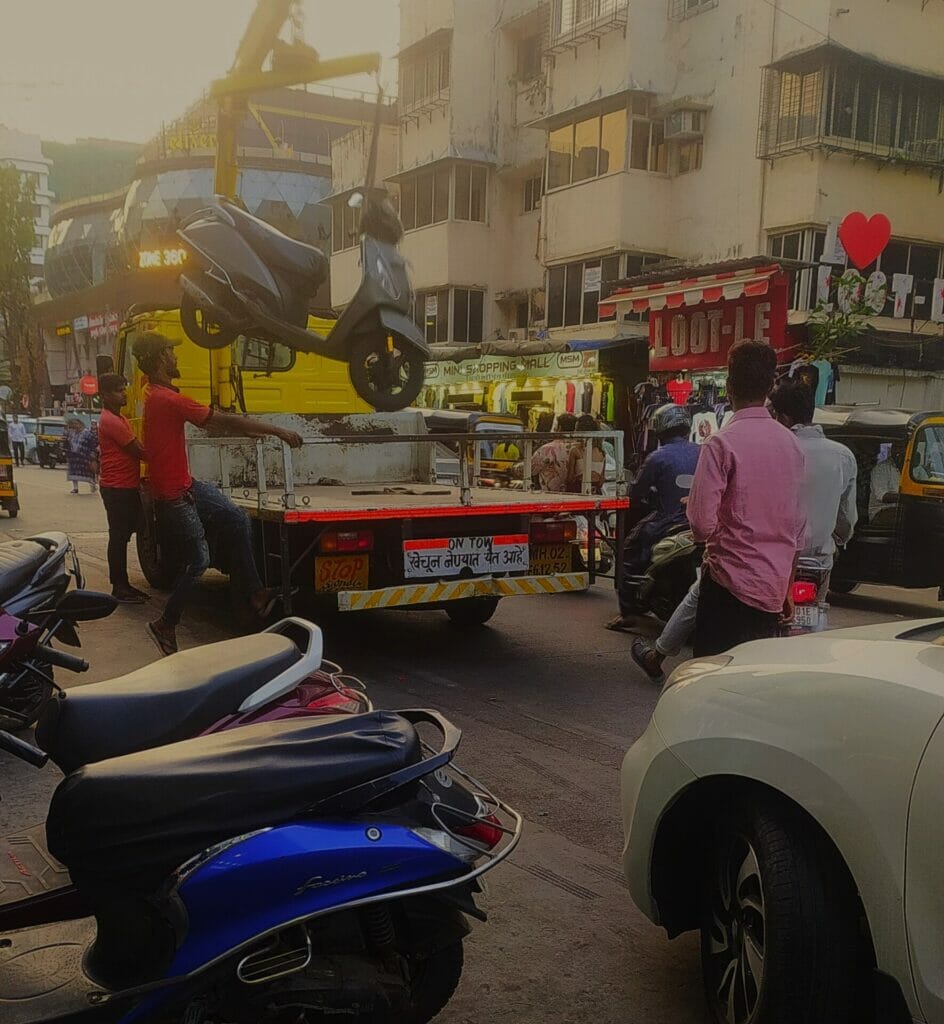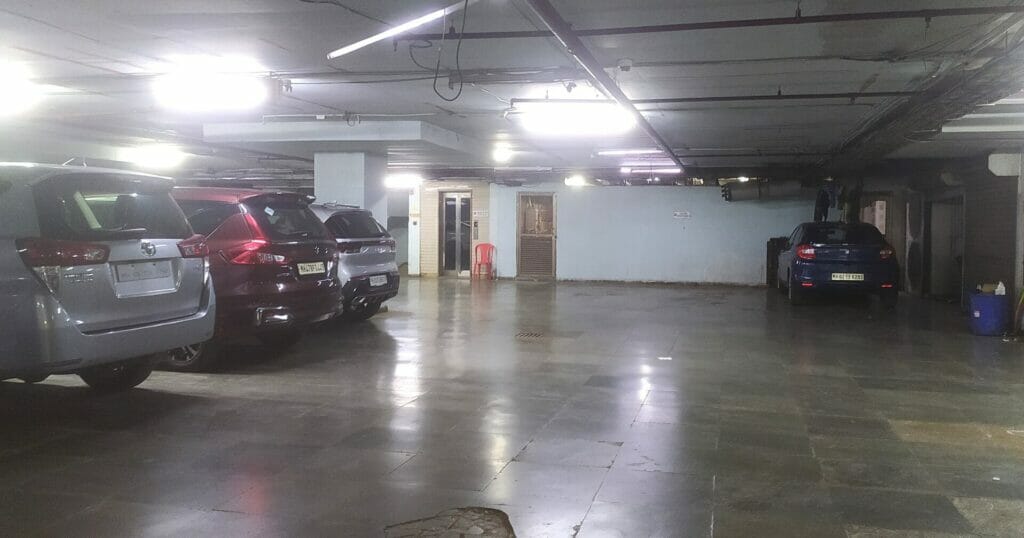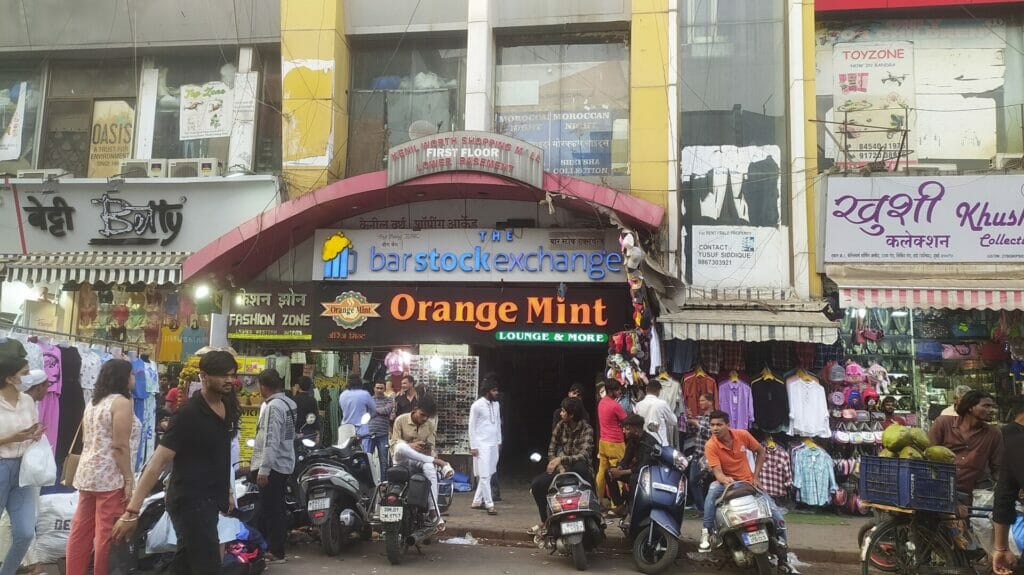With 45 lakh vehicles in Mumbai including 14 lakh cars till January-2023, the city has a vehicular density of 2250 vehicles per km, the highest in the country, says the Maharashtra’s Economic Survey report. Not surprisingly, the city is teeming with parked vehicles on its streets, footpaths, building compounds, bylanes, even its parking lots and is struggling to make space for the ever-increasing number of private vehicles that are making their way in the city.
Current status of parking spaces in the city
Currently, Mumbai has provision for parking 27,295 vehicles in its 31 functional parking lots. Apart from this, the city has 91 on-street parking lots, 22 are not operational currently due to various developmental works on it.
Mumbai is in the process of constructing robotic multi-level parking lots at Mumbadevi (546 vehicles), Matunga (475 vehicles) to develop 948 car parking slots. Three more underground parking lots are proposed at Flora Fountain (176 cars), Worli (640 cars) and on a part of Bandra’s Patwardhan Park (228 cars). Overall, the Brihanmumbai Municipal Corporation (BMC) will spend about Rs 300 crores to develop underground parking lots that can barely accommodate 1044 cars, a tiny fraction of the total number of 45 lakh vehicles already in the city.
Every day more than 700 vehicles get added in the city. This means by the time the parking infrastructure is ready, the actual number of vehicles in the city would have multiplied multifold.
The demand for parking spaces seems unquenchable. Parking space has become such a scarce commodity that the BMC is now looking to create underground parking facilities to address the shortfall.

How bad is the parking problem?
Parking shortfall not only affects the movement of vehicles on streets but also leads to higher pollution levels and has adverse impact on safety of vehicles and cleanliness of the streets.
Businessman Jackson D’Souza says it is safer to park in parking lots, but they are not easy to find in many areas. He says it is extremely difficult to find parking in popular and crowded market areas like Crawford Market or Linking Road or Hill Road. People have to park in distant bylanes in these areas and walk, he says.
Founder of Mumbai March Gopal Jhaveri says that many public parking spaces are deliberately kept inaccessible by vested parties. “A few parking lots are the dens of used car dealers, who block access to outside vehicles giving vague reasons. A public parking lot at Walkeshwar always denies access citing staffing excuses as local residents have completely taken over its parking.”
A Hindustan Times report found that many of the public parking lots were badly maintained, which discouraged many users as people felt ‘unsafe’ in them. The report also found private garages operating from public parking lots.
Jhaveri also pointed out that many government owned buildings such as police stations, ward offices, BMC headquarters, High Court and other various courts, hospitals offer no parking facility for visitors. “Though BEST depots are supposed to offer parking, the procedures are quite cumbersome and put you off,” he says.
Also, parking charges at places like the airport, which has a rate of Rs 250 per hour, Sanjay Gandhi National Park, which allows only one flat rate of Rs 260 per day or many shopping malls are exploitative and prohibitive, forcing people to park outside, he says. Parking charges range from Rs 50 to Rs 200 per hour depending on the location – street or mall.
When people resort to on-street parking in areas where it is not allowed or park in an inappropriate manner, it leads to further traffic snarls and more parking woes. Streets have also become dumpyards for scrapped vehicles. Hawking from parked vehicles is a new trend started by hawkers to escape action from eviction drives.

Existing parking facilities underutilised and misused, so why build more?
Activist Zoru Bhathena points out that though permissions for residential or commercial buildings are granted only if they show necessary provision for parking. But, “BMC fails to act even if these parking facilities don’t have public access or are misused for commercial purposes. Many buildings refuse parking for their own visitors even if they do have the space. Similarly, in many shopping complexes basement parking spaces are converted into shops forcing vehicles on the streets,” say Zoru.
He cites the example of three-levels of underground parking lot being planned at a part of the Bandra’s Raosaheb Patwardhan Park despite the existence of underground parking lots being under-utilised and converted into commercial shopping in four neighbouring buildings. In fact, a shop operates from a car lift in one of the buildings,at Linking Road in Bandra.
The BMC’s efforts to also get residential buildings to open up their parking slots for outside cars never materialised as it was met with stiff opposition. The BMC is also trying to get an app to help people identify nearby vacant parking slots available in the city.
“But, BMC finds it more remunerative to build more parking, which could also be misused. This is the story of our entire city,” Zoru laments.
Read more: No parking please: citizens oppose BMC’s plans for underground parking at Juhu’s public park
Does city planning address parking problems?
In Mumbai, first came the roads and then came parking on-streets and off-streets. Only after those spaces became insufficient and unmanageable, the city got down to planning for its parking requirements. Perhaps a case of too little, too late.
Only in 2018, Section 51 of the Development Control and Promotion Regulation (DCPR)-2034 recommended setting up of a Mumbai Parking Authority (MPA) to regulate and manage parking. The MPA then appointed the Tata Institute of Social Science (TISS) for GIS-mapping of parking locations in Mumbai to determine parking charges thereafter. Four municipal wards, namely G-South, D, K- West and S Ward will have new parking regulations on a pilot basis soon.

Earlier, the municipal commissioner would invoke Section 326(B) of the Mumbai Municipal Corporation Act, 1888 that empowered him to introduce traffic demand measures. These included road pricing mechanisms, such as area licensing, cordon pricing, supplementary licensing, charging for on-street and off-street parking for vehicles.
While cordon pricing is a charge payable on entering certain designated areas, supplementary licensing is a fee levied only in specific areas during specific hours. Section 326 (A) empowers the municipal commissioner to earmark on-street parking for a fee.
The DCPR now allows parking lots to be developed below flyovers (Section 54 of DCPR) and even below gardens (Section 53), a provision that threatens the scarce green open spaces of the city.
Is providing parking for private cars a state responsibility?
The State has the powers to regulate parking, but nowhere does it mandate the state to provide for parking. Vidyadhar Date from Sustainable Urban Mobility Network, a vocal proponent of public transportation, questions: “If Metro is meant to get car users off the roads, then why are we building car parking facilities? Is it even the State’s responsibility to provide parking for the unlimited cars that the citizens seem to be buying? Instead of spending on parking lots, why doesn’t the city restrict the number of vehicles in the city?”
Asserting that it is not the government’s job to create parking, Shreya Gadepalli, founder of Urban Works Institute (UWI) asks,”Shouldn’t our limited public funds be used to create housing for the poor rather than for housing cars?” She said city policies should be geared to dissuade private car usage. “Parking is a form of real estate and people should be made to pay as per its real market value. This will also get them to reassess their transport choices and nudge them to opt for sustainable alternatives instead,” she believes.

Making the case for streets being meant for the movement of people and goods rather than for parking, she explains: “Parking tends to be like a magnet that induces traffic – less parking facilities results in less traffic. If people are given limited and expensive parking, that will nudge motorists towards off-street parking facilities or towards public transportation that doesn’t require any parking,” she says.
However, car users differ in their opinion. Jackson argues that cars should be allowed free on-street parking considering the number of taxes charged. “After levying 18% of GST and various surcharges on fuel and other services, roads taxes, toll, parking charges, shouldn’t it be the government’s responsibility to provide parking space for vehicles? Hawkers and rickshaws are parked free all over on our roads, but it’s unfair that I am not allowed to park my own vehicle in front of my own building. Expecting people to shell out Rs 100 for parking while on a short visit to say, an ATM or a medical store, is impractical. The government must understand that owning a four-wheeler these days is not a luxury but a necessity because BEST buses are crowded and trains are impossible to get in during peak hours,” says Jackson.
Read more: The causes and fixes to traffic in Mumbai: A discussion
What can the city do about it?
Jhaveri suggests that vacant parking lots at places like cinema houses (that are empty during daytime), even government offices and schools (empty on public holidays) be open to all during non-peak hours. He also demands that parking fees be standardised at affordable rates to make parking facilities accessible even for middle-class car users. He also says that encroachments on plots meant for public parking must be cleared.
Shreya recommends Mumbai adopts the Singapore pattern, whereby a city restricts the number of new cars as per its capacity. The permits to buy new vehicles are auctioned annually. Such permits command a premium, given how scarce they are. Sometimes, they cost three times the price of a car, thus also helping generate revenue for the city apart from discouraging private cars.
She feels Mumbai should adopt the European model where parking lots are now being replaced and reused for other activities. “Europe is now introducing restrictions and eliminating parking spaces. For example, Paris has replaced 1.7 lakh parking slots with public facilities like cycle tracks. London has parking restrictions in buildings in areas that are served adequately by public transportation. We should get people to factor in their parking costs along with fuel and other costs while buying new cars. Especially when people have multiple public transportation options available, be it the buses, taxis or auto rickshaws that don’t require any parking at an individual level.”
Zoru feels that the government must first ensure optimal usage of existing parking spaces instead of investing in building more parking lots. “Even if the BMC simply acts on freeing up existing (misused) spaces, we won’t have a parking problem,” he asserts.
Also read:
- Interview: “People buy cars in Mumbai because they don’t have to think of parking cost”
- Is Mumbai a step closer to solving its parking crisis?
This article is part of a series of articles on Urban Planning in Mumbai, supported by a grant from the A.T.E. Chandra Foundation.
The city planners have always supported more number of cars by providing new flyovers and highways without considering the eco friendly way of commuting like bicycle and walkers. If the public transport is efficient then there won’t be any need of increasing the number of cars or their parking lots. We need more open spaces for people, not cars.